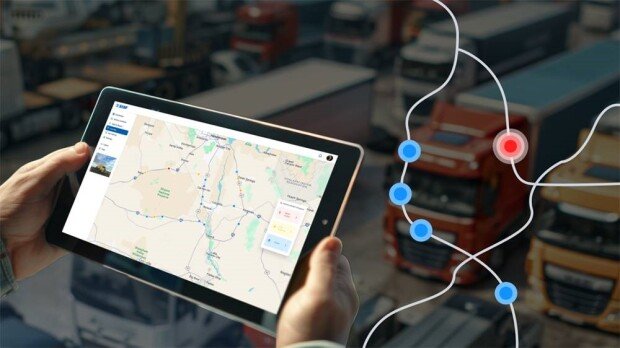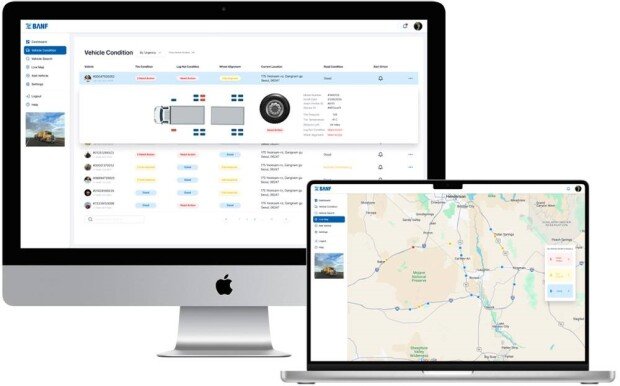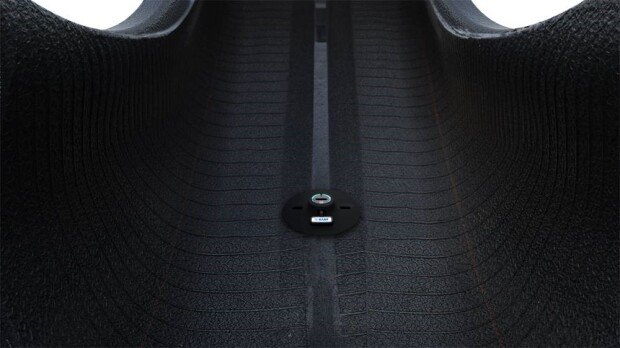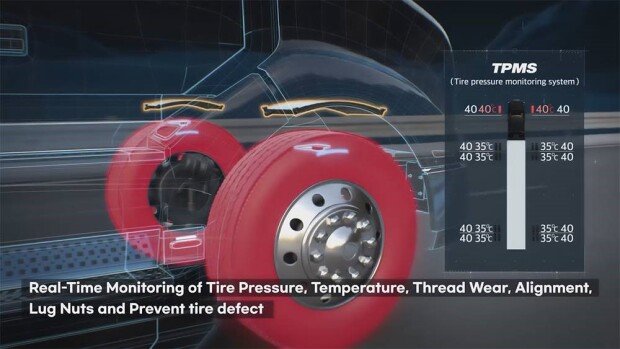BANF Emerges as a Solution to Deadly 'Lug Nut Loosening' Accidents
BANF Emerges as a Solution to Deadly 'Lug Nut Loosening' Accidents
Posted December. 23, 2024 16:00,
Updated December. 23, 2024 16:00
The tires we use each day incorporate a profound range of scientific technology. Complex and interconnected factors such as noise, durability, vibration, wear, material engineering, heat accumulation, contact mechanics, traction, vehicle dynamics, rolling resistance, and finite element analysis are all carefully considered. While the field has been studied for nearly half a century, it has now evolved to integrate cutting-edge technologies like electrification and autonomous driving, addressing both the equipped vehicle and surrounding environments.
Research and Markets predicts that the smart tire market will grow annually by 7.5%, to reach $161.6 billion by 2030. Both domestic and global companies in the sector are rapidly expanding. Among the notable domestic startups is BANF, which develops technology and solutions for collecting and analyzing data from tire-mounted sensors (TMS), enabling various uses beyond driving.
BANF Prepares for the Autonomous Driving Market with Vehicle Sensors
 BANF has developed the 'Tire Profile' solution for vehicle tire data management systems. / Source: BANF
BANF has developed the 'Tire Profile' solution for vehicle tire data management systems. / Source: BANF
BANF's Tire Profile solution combines three technologies: iSensor, Smart Profiler, and Data Viewer. The iSensor, a proprietary tri-axial accelerometer sensor installed within the tire, uses TPMS and low-energy Bluetooth to collect data on tire and tread condition, lug nut loosening, road surface information, wheel alignment optimization, and tire load. This data is then converted into a readable format by the Data Viewer.
 Tire data is centrally managed and used for road data and autonomous driving applications. / Source: BANF
Tire data is centrally managed and used for road data and autonomous driving applications. / Source: BANF
Collected data extends beyond individual vehicles, serving industries as a whole. For logistics, it enables the early detection of tire issues, preventing accidents, reducing costs, and improving fuel efficiency. It also supports the centralized management of real-time vehicle location and status. For intelligent transportation systems (ITS), this data helps identify road surface issues such as slipperiness and black ice.
Preventing Fatal 'Lug Nut Loosening' Accidents
The tire data collected by BANF’s smart tires can also detect the condition of lug nuts, the large nuts that secure a vehicle’s wheels. Improper tightening—whether under or over-torqued—can lead to nut loosening and eventually wheel detachment during prolonged driving. Detached wheels, weighing over 100 kilograms, are a major cause of multi-vehicle collisions and fatal accidents.
 BANF's iSensor installed inside a tire. / Source: BANF
BANF's iSensor installed inside a tire. / Source: BANF
According to research by Mark Bailey, a senior forensic engineer with the MEA, which was published in June in the Journal of the National Academy of Forensic Engineers, 79 out of 100 wheel separation incidents experienced by a fleet company in 2020 were caused by improper tightening of hub bolts and wheel nuts. Among the cases studied, wheels separated after an average of 38 days and 2,324 km following improper repairs.
While U.S. laws mandate regular inspections for large trucks and Canada requires trained technicians for commercial wheel repairs, lug nut loosening is difficult to detect visually. This issue remains even with trailers, as their tires often go unchecked. With current incidents exceeding 50,000 annually for eight-hour operations, the rise of autonomous driving and 24-hour operation is expected to increase these numbers dramatically.
 The iSensor collects tire data, and the Smart Profiler processes and charges the device. / Source: BANF
The iSensor collects tire data, and the Smart Profiler processes and charges the device. / Source: BANF
BANF's Tire Profile solution monitors lug nut condition based on tire temperature, pressure, tread, and alignment. This system costs about $50 per month, and claims to reduce vehicle and tire maintenance costs by up to $4,500. BANF is already collaborating with global OE (original equipment) and tire manufacturers.
The Seoul Business Agency (SBA) has designated BANF as a promising startup, introducing its interviews and achievements through the 2024 Scale-Up Program. SBA also supported BANF’s “Real-Time Road Surface Information System Based on Tire Data” project through the 8th Seoul Innovation Challenge, and named BANF as the grand prize winner in the 2024 Seoul Unicorn Challenge. As part of this recognition, BANF received global business development funds and follow-up program support for its target markets.
BANF's Tire Profile: A Model for Electrification Success
Given the difficulty of visually detecting lug nut loosening, the market already offers various solutions, such as plastic indicators for nuts or metallic devices securing multiple nuts. However, lug nut loosening is believed to occur more frequently than reported, often leading to fatal accidents. BANF’s Tire Profile solution not only offers companies an economical and straightforward approach to preventing lug nut loosening, but also aids in road management and data collection for autonomous driving. As the autonomous driving market expands, BANF’s solution is poised to stand out as an economically efficient, operationally effective, and safety-enhancing tool.
by Si-hyeon Nam (sh@itdonga.com)
Research and Markets predicts that the smart tire market will grow annually by 7.5%, to reach $161.6 billion by 2030. Both domestic and global companies in the sector are rapidly expanding. Among the notable domestic startups is BANF, which develops technology and solutions for collecting and analyzing data from tire-mounted sensors (TMS), enabling various uses beyond driving.
BANF Prepares for the Autonomous Driving Market with Vehicle Sensors

BANF's Tire Profile solution combines three technologies: iSensor, Smart Profiler, and Data Viewer. The iSensor, a proprietary tri-axial accelerometer sensor installed within the tire, uses TPMS and low-energy Bluetooth to collect data on tire and tread condition, lug nut loosening, road surface information, wheel alignment optimization, and tire load. This data is then converted into a readable format by the Data Viewer.

Collected data extends beyond individual vehicles, serving industries as a whole. For logistics, it enables the early detection of tire issues, preventing accidents, reducing costs, and improving fuel efficiency. It also supports the centralized management of real-time vehicle location and status. For intelligent transportation systems (ITS), this data helps identify road surface issues such as slipperiness and black ice.
Preventing Fatal 'Lug Nut Loosening' Accidents
The tire data collected by BANF’s smart tires can also detect the condition of lug nuts, the large nuts that secure a vehicle’s wheels. Improper tightening—whether under or over-torqued—can lead to nut loosening and eventually wheel detachment during prolonged driving. Detached wheels, weighing over 100 kilograms, are a major cause of multi-vehicle collisions and fatal accidents.

According to research by Mark Bailey, a senior forensic engineer with the MEA, which was published in June in the Journal of the National Academy of Forensic Engineers, 79 out of 100 wheel separation incidents experienced by a fleet company in 2020 were caused by improper tightening of hub bolts and wheel nuts. Among the cases studied, wheels separated after an average of 38 days and 2,324 km following improper repairs.
While U.S. laws mandate regular inspections for large trucks and Canada requires trained technicians for commercial wheel repairs, lug nut loosening is difficult to detect visually. This issue remains even with trailers, as their tires often go unchecked. With current incidents exceeding 50,000 annually for eight-hour operations, the rise of autonomous driving and 24-hour operation is expected to increase these numbers dramatically.

BANF's Tire Profile solution monitors lug nut condition based on tire temperature, pressure, tread, and alignment. This system costs about $50 per month, and claims to reduce vehicle and tire maintenance costs by up to $4,500. BANF is already collaborating with global OE (original equipment) and tire manufacturers.
The Seoul Business Agency (SBA) has designated BANF as a promising startup, introducing its interviews and achievements through the 2024 Scale-Up Program. SBA also supported BANF’s “Real-Time Road Surface Information System Based on Tire Data” project through the 8th Seoul Innovation Challenge, and named BANF as the grand prize winner in the 2024 Seoul Unicorn Challenge. As part of this recognition, BANF received global business development funds and follow-up program support for its target markets.
BANF's Tire Profile: A Model for Electrification Success
Given the difficulty of visually detecting lug nut loosening, the market already offers various solutions, such as plastic indicators for nuts or metallic devices securing multiple nuts. However, lug nut loosening is believed to occur more frequently than reported, often leading to fatal accidents. BANF’s Tire Profile solution not only offers companies an economical and straightforward approach to preventing lug nut loosening, but also aids in road management and data collection for autonomous driving. As the autonomous driving market expands, BANF’s solution is poised to stand out as an economically efficient, operationally effective, and safety-enhancing tool.
by Si-hyeon Nam (sh@itdonga.com)
Headline News
- Acting president fills key court vacancies, opposition cries foul
- Graham Allison raises alarm over 'Thucydides Trap' as U.S.-China tensions rise"
- Samsung posts 6.6 trillion won operating profit in Q1
- Chinese teens caught filming Air Force jets without authorization
- S. Korea’s early presidential election set for June 3







